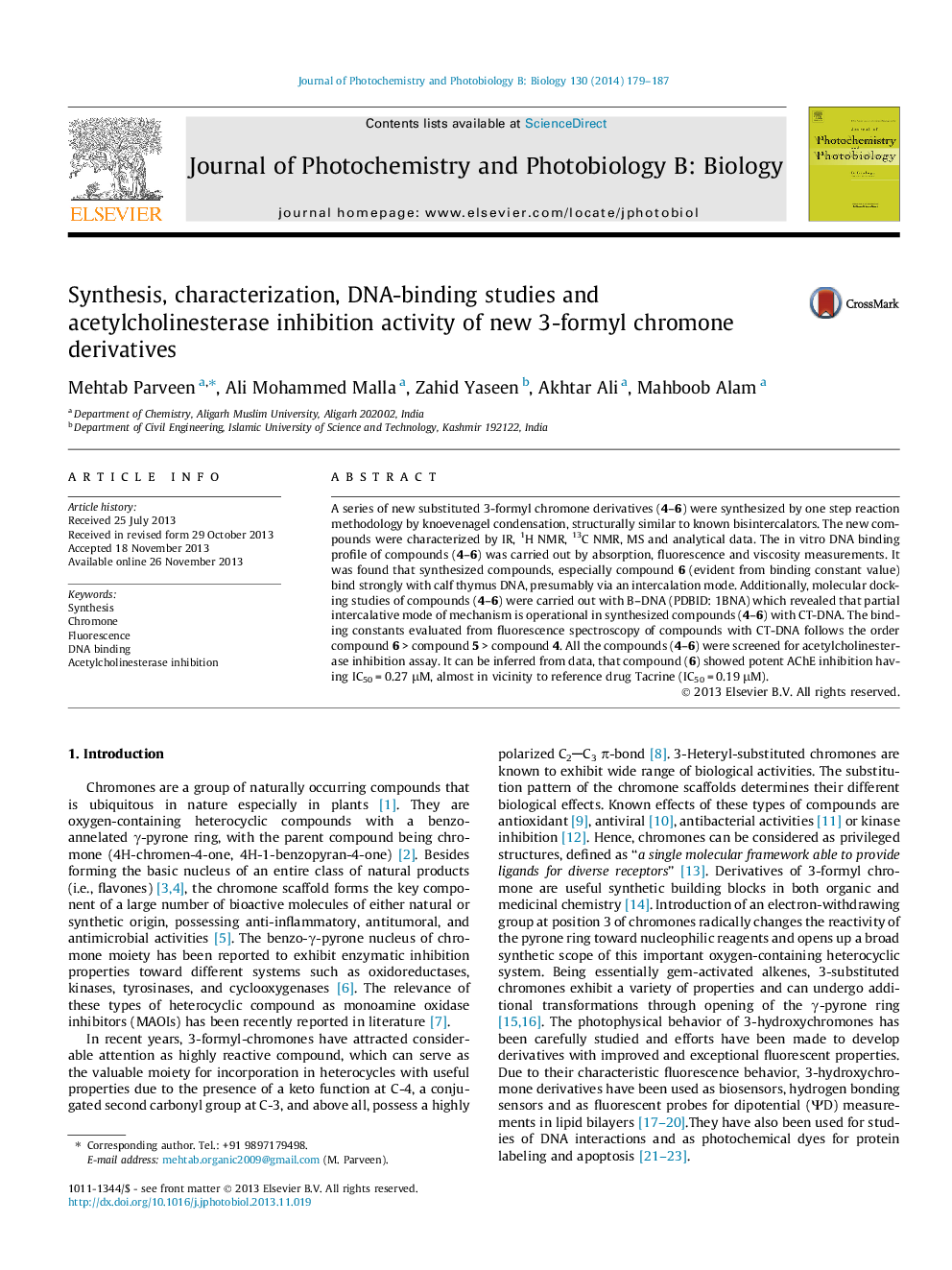| Article ID | Journal | Published Year | Pages | File Type |
|---|---|---|---|---|
| 30436 | Journal of Photochemistry and Photobiology B: Biology | 2014 | 9 Pages |
•A new class of chromone derivatives were designed and synthesized.•Interaction of compounds with CT-DNA was evaluated by UV–vis and fluorescence spectroscopy.•Synthesized compounds presumably bind to DNA via an intercalation mode.•Docking study showed the usefulness in virtual screening of synthesized compounds.•Compounds were screened for in vitro acetylcholinesterase inhibition activity.
A series of new substituted 3-formyl chromone derivatives (4–6) were synthesized by one step reaction methodology by knoevenagel condensation, structurally similar to known bisintercalators. The new compounds were characterized by IR, 1H NMR, 13C NMR, MS and analytical data. The in vitro DNA binding profile of compounds (4–6) was carried out by absorption, fluorescence and viscosity measurements. It was found that synthesized compounds, especially compound 6 (evident from binding constant value) bind strongly with calf thymus DNA, presumably via an intercalation mode. Additionally, molecular docking studies of compounds (4–6) were carried out with B–DNA (PDBID: 1BNA) which revealed that partial intercalative mode of mechanism is operational in synthesized compounds (4–6) with CT-DNA. The binding constants evaluated from fluorescence spectroscopy of compounds with CT-DNA follows the order compound 6 > compound 5 > compound 4. All the compounds (4–6) were screened for acetylcholinesterase inhibition assay. It can be inferred from data, that compound (6) showed potent AChE inhibition having IC50 = 0.27 μM, almost in vicinity to reference drug Tacrine (IC50 = 0.19 μM).
Graphical abstractFigure optionsDownload full-size imageDownload as PowerPoint slide
